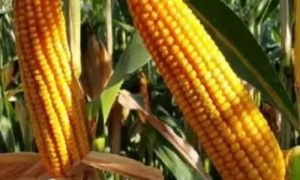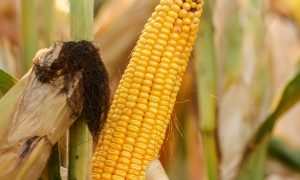Setback for crop diversification in Punjab: In 50 years, area under maize down 82%, paddy continues to gain acreage

In Punjab, maize cultivation has plummeted 82% from 577,000 hectares in 1975-76 to 103,624 hectares by July 17, 2024. Over 19 years, the area has decreased by 20%, from 149,000 hectares in 2005-06 to the current figure. Despite maize being a water-efficient alternative to paddy, its cultivation has stagnated due to limited incentives and reliance on costly seeds. Punjab’s maize productivity surpasses the national average, yet the state doesn’t rank among the top maize producers in India.
In 50 years, the area under maize cultivation in Punjab decreased by 82%. From 5,77000 hectares in 1975-76, the area under the kharif crop declined massively and is at 1,03,624 hectares till July 17, 2024.
Similarly, in 19 years, from 2005–06 till 2024, the area under the crop has registered a decline of 20% from 1,49,000 hectares to 1,03,624 hectares. (see chart)
In contrast, the country has seen a reverse and positive trend over the years. From 1975-76 till 2020-21, area under maize in the country has increased from 59,80,000 hectares to 99,00,000.
With maize being a major alternative for paddy in Punjab , this is being seen as a growing concern in the agrarian state.
Kharif maize requires significantly less water compared to paddy, which (depending upon paddy varieties) needs to be irrigated 25 to 30 times as opposed to three times for maize, which typically relies on rain.
Farmers in Punjab give more importance to spring maize, which demands more intensive irrigation, varying from 8 to 15 times, depending on soil conditions. However, experts warn that spring season maize cultivation can adversely affect groundwater levels.
Experts said that kharif maize, known for its versatility beyond traditional dishes such as ‘Makki di roti’ with ‘Sarson da Saag’, plays a crucial role in crop diversification. And to achieve diversification goals, Punjab needs to diversify around 5 to 6 lakh hectares under kharif maize, which is sown and harvested at the time of paddy.
However, data from the Punjab Agriculture Department reveals stagnant growth, with maize cultivation fluctuating between 95,000 to 1.24 lakh hectares annually in recent years. In the current season, as of July 17, approximately 1,03,624 hectares of land is under maize cultivation.
Maize is predominantly cultivated in districts such as Hoshiarpur, Roopnagar, Shaheed Bhagat Singh Nagar, Amritsar, Gurdaspur,Jalandhar , Kapurthala, Patiala,Ludhiana , SAS Nagar, and Fatehgarh Sahib in Punjab. There was a time when Punjab cultivated 5.77 lakh hectares of maize.
That was in 1975-76. However, in the early 1990s, the area steadily decreased, dropping below 2 lakh hectares by 1990-91, reaching 1.88 lakh hectares – a significant decline within 15 years. Subsequently, the area continued to diminish, registering 1.65 lakh hectares in 2000-01, further declining to 1.38 lakh hectares by 2010-11. In the following decade, the area decreased to 1.08 lakh hectares by 2020-21.
Punjab’s maize productivity per hectare surpasses the national average by 15-20%, making it a promising alternative to paddy. Yet, despite its agricultural prowess, Punjab does not rank among the top 10 maize-producing states in India.
Maize serves as a vital component in animal feed, starch production, and various culinary preparations, including corn flakes and baby corn dishes. Baby corn can be used in salads and soups. It can be served raw with other vegetables as well. However, experts from the Agriculture Department criticise the lack of substantial incentives for farmers to promote maize cultivation, beyond sporadic seed subsidies.
Hanuman Sahay Jat, Director of the Indian Institute of Maize Research (IIMR) at Punjab Agricultural University (PAU), Ludhiana, told The Indian Express , that hybrid seeds are now available for kharif maize, delivering yields comparable to paddy. He emphasised that for Punjab to successfully diversify into maize cultivation, it must prioritize developing its own high-quality seeds.
Jat highlighted that IIMR is in a position to provide essential technical expertise for seed cultivation. Currently, farmers heavily rely on seeds from private suppliers, or they often source from Andhra Pradesh at higher costs, impacting profitability.
Dr Jat underscored the importance of supporting maize cultivation through adequate minimum support price (MSP) and essential infrastructure such as dryers. Despite a substantial demand for maize in Punjab, the state currently meets less than 10% of its total demand.
A senior scientist at PAU said that withdrawing free power subsidies could prompt farmers to switch to alternative crops, including maize, within a year. Jat also cautioned against spring season maize cultivation as it can take a toll on groundwater levels.
Source Link : https://indianexpress.com/article/cities/chandigarh/crop-diversification-punjab-maize-paddy-9464692/
















